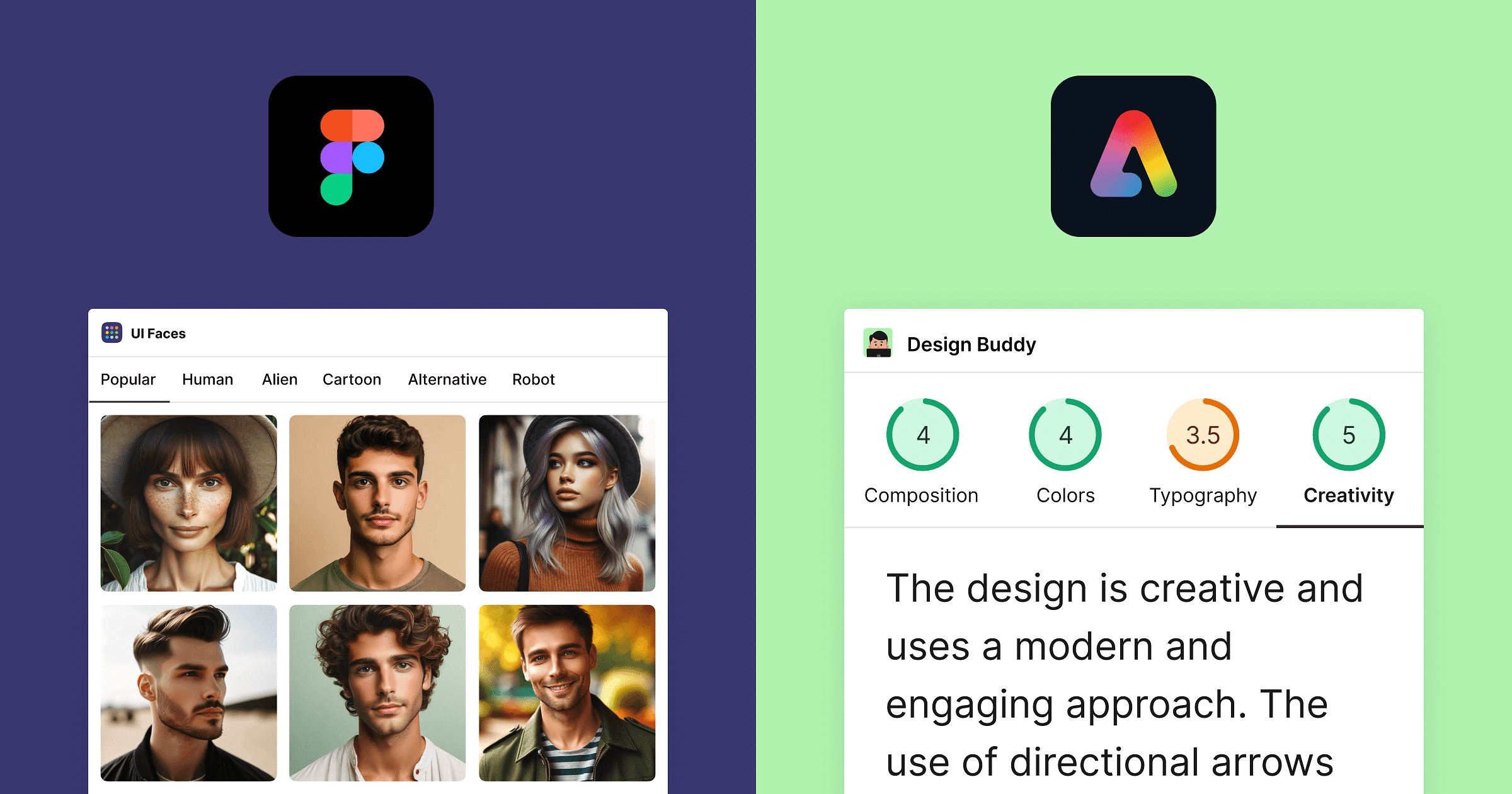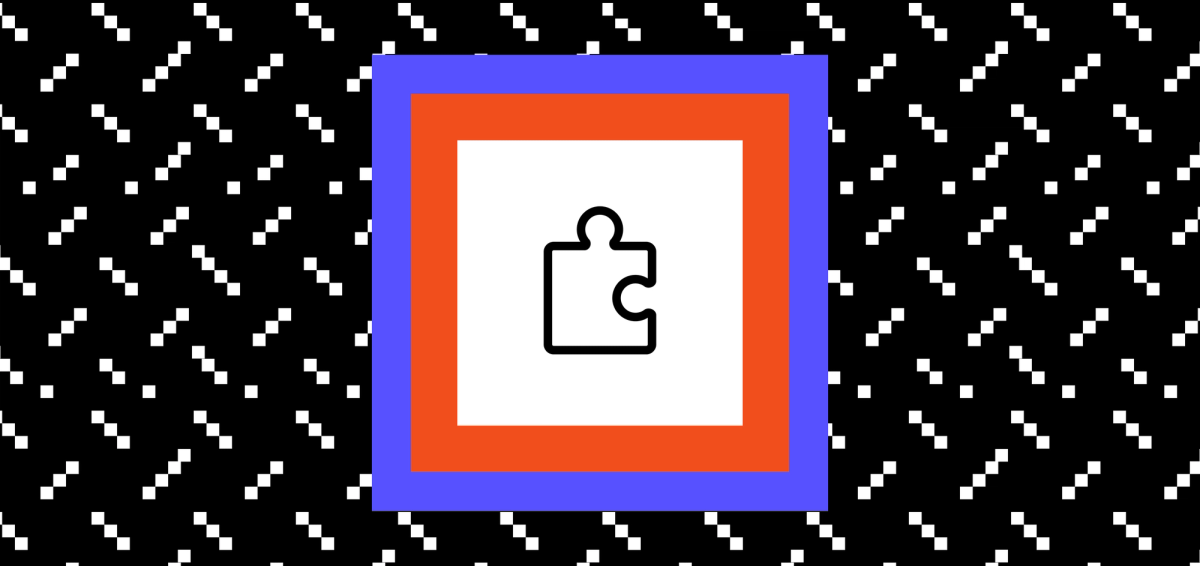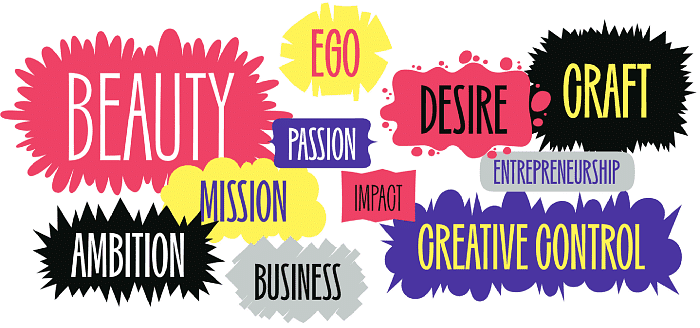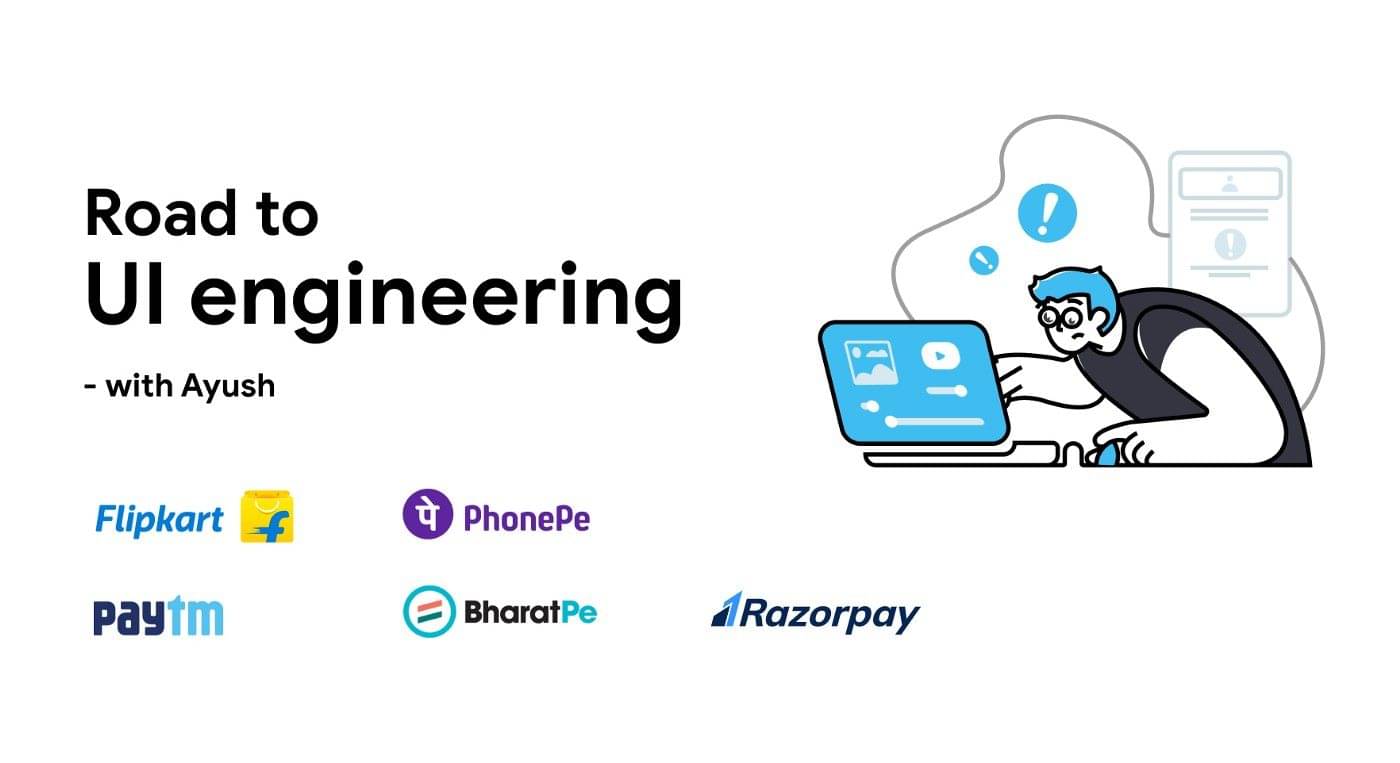An interview with Design Buddy and UI Faces founder, Mighty Alex
Ever since the explosion of design tools about a decade ago, back when Sketch's community plugins took off, design tool extensions have emerged as a thriving economy. Designers and developers have platforms not only to design in, but to extend and customize with new ideas and capabilities that improve their workflows.
Today’s AI-powered plugins are not just streamlining workflows or adding features; they can reshape how designers interact with their tools.
This plugin/community driven approach to development not only enhances the design tools, but can also pave the way for experimentation and innovation, particularly as we stand at the advent of AI in design. Plugin creators get a sandbox to explore new possibilities, including today's AI-powered integrations.
In this interview with Aleksandar Tasevski - designer, developer, and founder of Mighty Tools - we'll explore how similar community approaches are used by Figma (Figma Community) and Adobe (first with XD then Express), and how you can leverage these plugin ecosystems to turn your ideas into tools used by thousands.
Through his work building AI-powered plugins such as UI Faces and Design Buddy, Tasevski demonstrates how experimental plugins not only uncover new approaches and ideas, but also can actively shape the future of design technology - enhancing existing tools and potentially guiding the evolution of design platforms themselves.
Figma's acquisition of Diagram, a company building AI-powered design tools, confirms that this is not just a passing trend.
To start though, let's find out how he began with plugin development (including how he’s been using AI since 2017 👀). And at the end, you can find some advice for building your own plugins too!


Letter
Q. Tell us about yourself and your plugin journey
I'm Aleksandar Tasevski, a product-oriented designer and developer. My journey in the design industry spans over a decade, during which I've worked with Fortune 500 companies like Adobe and created plugins that enhance the design process for over 300,000 creatives worldwide.
This was leveraging AI back in 2017, before it became the buzzword it is today.
It all started in 2017 when I needed diverse user avatars for my design projects. I wondered if there was anything that could save me time by automatically populating designs with realistic avatars, and stumbled across an abandoned Sketch plugin called UI Faces. After reaching out to the original creator and getting no response, I decided to create my own version from scratch.

With zero plugin development experience, I set up shop in a café, determined to build something new. It wasn't easy, and I struggled with the initial version. The plugin also needed fresh content, so I went the extra step and created an aggregator that pulled images from free stock photo websites.
AI was here in 2017
Here's where it got interesting: to make UI Faces even more useful, I incorporated one of the earlier AI offerings from Microsoft called Face API. This API uses artificial intelligence to analyze images and detect human faces, extracting information like age, emotion, and gender.

Through the Face API, I was able to create a smart filtering system for categorizing user faces, which was a game-changer for designers – instead of manually sorting through countless images, designers could now instantly filter avatars based on specific attributes. Want a smiling woman in her 30s? Just a few clicks away. This was cutting-edge stuff back in 2017, long before AI became the buzzword it is today.
Instead of manually sorting through countless images, they could now instantly filter avatars based on specific attributes.
In all, it was a significant upgrade the way designers added avatars to their mockups, saving time and enhancing the diversity of their designs, and the response was overwhelming.

Becoming a plugin developer
The plugin quickly gained traction, catching the attention of Adobe, who reached out for a partnership. Soon enough, UI Faces became one of the pioneering plugins in the Adobe XD ecosystem. Fast-forward to today, and it’s now grown to an AI-driven Avatar platform:
The success of UI Faces opened my eyes to the vast potential of plugin development. I realized that as a designer, I was in a unique position to identify and solve real problems faced by creatives every day. This led to the creation of a whole suite of plugins: UI Copy, Media Grab, Toki Chat, Minimap, Scale Prop, GIF Maker, and most recently, Design Buddy – each born from a specific need I encountered in my work.
The success of UI Faces opened my eyes to the vast potential of plugin development.

Q. Design Buddy is your most recent plugin, what is it, and how did you start?
As AI continued to evolve, I noticed more opportunities to enhance the design process. My experience as a solo designer on a product team highlighted a common frustration: getting timely, constructive design feedback. Sometimes people are too busy, other times there's an overwhelming amount of opinions, not all of which are necessary at a given stage.
With the emergence of ChatGPT, people were becoming accustomed to interacting with AI.
At the same time, with the emergence of ChatGPT, people were becoming accustomed to interacting with AI. It all came together when I imagined how helpful it would be to have a second pair of designer eyes - always available, offering friendly, unofficial feedback based on actual design principles and theory.

I envisioned a tool that could provide insights on crucial areas like accessibility, layout, color theory, and typography. Something that would not only benefit professionals but also support those creating portfolios or learning design.
Everyone makes mistakes, especially near deadlines. Design Buddy is a great time-saver for all creatives." Zlatko Najdenovski, Figarc Founder.
This realization, combined with my experience as both a solo designer and part of large design teams, led to the creation of Design Buddy. It's an AI-powered Figma and Adobe Express plugin that acts like a helpful teammate, offering insightful design reviews on UI designs.
Q. How does Design Buddy Work? What made it possible?
Design Buddy's functionality combines AI technology from OpenAI and a deep understanding of design theory, principles, and best practices.
The real breakthrough in building Design Buddy came when OpenAI introduced their Vision model.
It provides structured feedback on layout, color, typography, and accessibility, assigning objective scores to each category, while also identifying often-missed flaws in designs, ensuring they're polished before presenting to stakeholders. This preemptive review minimizes the need for future revisions and saves valuable time for designers at all levels.

The real breakthrough in building Design Buddy came when OpenAI introduced their Vision model. This technology made it possible to create a design assistant that could actually "see" and understand designs, acting as both an experienced designer and a supportive buddy. It was a natural progression from my earlier work with AI in UI Faces.
Vision models can take in images and answer questions about them. Historically, language model systems have been limited by taking in a single input modality, text. (OpenAI)
I relied on my experience as a designer to make Design Buddy as user-friendly as possible, stripping the UI down to a single button for simplicity. The plugin's architecture is also carefully crafted:
The Figma plugin relies heavily on Figma's API to identify projects, documents, canvases, and objects.
The backend intelligently recognizes the design type and constructs a custom prompt for OpenAI, providing the necessary intelligence.
Integrating these technologies required careful planning and execution to ensure seamless and instant functionality for the user.
Q. What are the piece(s) of Design Buddy you're most proud of, and why?
I'm particularly proud of Design Buddy's ability to provide contextual feedback without any user settings or typing custom instructions. It intelligently analyzes the design, understands the context, and offers suggestions that make sense. As if it was a real person sitting beside you. This feature sets it apart from other tools that require manual input and configurations.
The thing that makes me happiest is seeing people use Design Buddy daily.
The simplicity of use is another highlight. Design Buddy embodies the principle that the best tools are those that integrate into the user's workflow, providing effective assistance without added complexity.
But the thing that makes me happiest is seeing people use Design Buddy daily. It’s incredibly rewarding to know that the plugin is helping them improve their designs and giving them confidence in their work.

Q. How did you discover early users for Design Buddy?
Design Buddy is useful for any member of a product team, especially Product Designers and Product Managers, whether creating or reviewing designs. Initial users have come from the Figma community, social media posts, and AI website directories.

Despite focusing mainly on development, including the current Adobe Express add-on, there's been steady growth among early adopters. This article marks a good start for broader promotion. :)
Despite not spending any time on marketing, Design Buddy ended up 3rd product of the day on Product Hunt.
Regarding traffic, I’ve been receiving mostly organic visitors from Google, as well as referrals from Product Hunt, YouTube, inspiration websites like One Page Love, AI directories such as Toools.design, and newsletters like TLDR Design.
Despite not spending any time on marketing, Design Buddy ended up as the 3rd product of the day on Product Hunt, which is very hard to achieve nowadays, especially for solo entrepreneurs.

What's Next for Design Buddy?
Q. Where do you want to take the project next?
The next step for Design Buddy is to refine its feedback mechanism to tackle more specific design challenges. I'm also exploring integrations with other design tools to expand its audience and user base.
This month, I'm releasing a Design Buddy add-on for Adobe Express, which will also broaden its feedback for design types like flyers, banners, and social posts. This move aims to make Design Buddy a versatile assistant across various design platforms and project types.

Q. Do you have any predictions about the future of your project industry?
I believe the future of design tools will continue to build on automation with increased intelligence. Tools like design assistants will likely become standard, providing real-time assistance and guidance. The integration of AI in design will keep evolving, potentially revolutionizing how we approach creative processes.
I received an email from Figma indicating that my plugin, UI Copy, might become obsolete.
For instance, Figma's acquisition of Diagram, a company building AI-powered design tools, confirms that this is not just a passing trend. This move underscores Figma's commitment to integrating AI into their platform. Similarly, Adobe's latest product, Adobe Express, heavily integrates AI, showcasing their dedication to leveraging AI.
This is a tweet embed February 14, 2023
As these developments continue, it's essential to stay adaptable. The features provided by standalone plugins might eventually be integrated directly into the core features of major design platforms. Crazy thing, but as we are just speaking, I received an email from Figma indicating that my plugin, UI Copy, might become obsolete due to their new AI-powered features:

This highlights the importance of continuous innovation to meet designers' evolving needs.
Do you have any advice for plugin developers?
Don't take it too seriously. Plugins are tiny projects with simple architecture that need to do one thing really well. Whether you're a designer or a developer, experiment, go beyond what's currently available, and most importantly, solve your own problems.
Plugins are tiny projects with simple architecture that need to do one thing really well.
Start by reading the first few pages of the developer docs for your favorite design tool and dive in. These projects are great for trying out new ideas without heavy investment. Remember, the best plugins are born from personal pain points. Have fun, experiment, and make something that makes your life easier.









